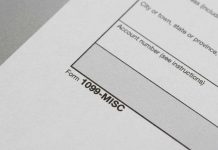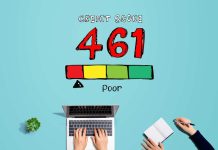
Taking a career break can be nerve-wracking, especially when it’s unplanned. However, it may offer a chance to recharge, pursue some personal interests, or even retrain for a new profession. Keep in mind while you’re off the career track, managing finances can become a tad bit tricky. But with a bit of careful planning, you can ensure your savings last and possibly thrive while in between jobs. Here’s a straightforward guide to help you budget while on a career break.
Navigating Financial Challenges
Budgeting can be tough, especially in today’s ever changing age. Many people may find it hard or feel like it’s too big a challenge to figure out. But trust us it is doable. As we talk about how to plan your finances for a break from work, it’s important to start with the basics:
- Review Your Income
- Cut Unnecessary Expenses
- Government Assistance Programs
- Create an Emergency Fund
By addressing each of these topics, you’ll be better equipped to face some financial challenges head-on.
Review Your Income
While on a career break, your first step would be to assess both your income level and monthly expenses. Seeing as most job loss comes as a surprise, your primary source of income may be disrupted without warning. So it’s important to assess exactly how much money you acquire each month from various sources. For example this could be what you already have in your savings, unemployment benefits or even a side gig you may be working. Therefore, by doing this you are becoming more aware of your overall income and what your budget will allow for spending.
Monthly Expenses
Create an itemized list detailing all costs, including utility bills, rent/mortgage payments, transportation costs for full-time employment search, and grocery shopping, among others. During this process you want to make sure you can differentiate between basic needs like food and shelter vs non-essential items. Non essentials being items that can be put aside temporarily. After listing out these expenses, you may want to consider ways in which they could potentially be reduced.
Cut Unnecessary Expenses
As discussed above your income plays a pretty big role when it comes to budgeting. Therefore you can say cutting expenses would be the second on the priority list. This involves cutting costs between wants and needs. This process requires you to examine where you’re spending money such as transportation costs, or credit card payments, entertainment subscriptions.
Keep in mind this doesn’t mean that all ‘wants’ have to go – just consider trimming down until you are able to find full/part time work again. For instance, maybe cooking at home instead of dining out. This can help save more than just a couple bucks in the long run. Remember, every dollar saved contributes towards improving your financial situation, especially during a career break.
Borrow Instead of Buying
It is also important to keep in mind that sometimes buying isn’t always necessary. You can cut back on expenses by simply not spending. Borrowing will do the job just fine depending on what you need. For example, if there’s a tool needed for some occasional home repairs but not frequently enough for owning one. Why not borrow from friends or family who already own one?
Government Assistance Programs
If you’re unemployed, government assistance programs can be a lifeline. They offer temporary relief and support while you navigate your job loss and seek full-time employment.
Unemployment Benefits: A Safety Net During Job Loss
The US government provides unemployment benefits to individuals who have been involuntarily separated from their employment. This program replaces part of your income level based on previous earnings if you meet the eligibility criteria.
SNAP Benefits: Food Stamps For Needy Families
A key element in managing monthly expenses when facing financial hardship is ensuring food security with resources like SNAP (Supplemental Nutrition Assistance Program). Often known as food stamps, it helps needy families buy groceries each month by providing funds specifically allocated for purchasing essential foods.
TANF – Temporary Relief When You Need It Most
In addition to SNAP benefits, there’s also TANF or Temporary Assistance for Needy Families. The purpose behind this aid is simple yet powerful: provide cash help so parents can take care of children. They also assist in other areas such as childcare programs and programs that can help adults find and prepare for work. Eligibility criteria may range from state to state but generally you can find the following included:
- You have a kid who is 18 yrs or younger
- You are 18 or under but are the HOH (Head of Household)
- You are expecting a baby/infant
Create an Emergency Fund
An emergency fund offers you comfort. That means knowing that in case of sudden costs, like unexpected car/medical bills, you have some money to rely on. You don’t have to resort to borrowing money or using credit cards, which can be a true breath of relief. In essence, it’s about ensuring monthly payments for basic needs continue without interruption if there’s any drop in income level due to part-time work or pay cut while unemployed.
Determining Your Emergency Fund Size
Your monthly expenses determine how much should be set aside for emergencies. Financial experts often advise saving enough funds equivalent to 3-6 months worth of living expenses. This could include rent/mortgage payments, buying groceries, and transportation costs. Along with other necessities like minimum debt payments on personal loans and utilities. Knowing exactly where you’re spending money will only help you better determine the right amount to have in your emergency fund.
Growing Your Emergency Budget
Saving can be difficult, especially during financial hardship; however, every little bit helps. As discussed above, cutting unnecessary expenses is a good start. Even selling unused items around the home could bring extra cash flow, which gradually adds up into substantial amounts within a savings account serving as your back-up plan.
Conclusion
Taking a break from your job can be scary, especially when it comes to money. But don’t worry, you can still keep your finances in check. The important thing is to have a good plan.
First, you need to know how much money you’ll have coming in and what you have to spend on things like rent and food. Remember to cut out any non-essentials for the time being. If you find that your situation becomes tougher, know that there are support programs available to you, like unemployment benefits, SNAP, and TANF. Another smart move is to save up some money for emergencies. This is a “just in case” fund for surprise expenses like a broken car or medical bills. Sure, knocking these marks off your checklist might feel tough at first, but every little bit helps.




























